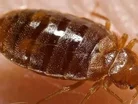Hairy arms and legs prevent bites from bed bugs

Usually people can’t wait to get rid of their excess body hair, but after reading the latest research they might become more grateful for its presence.
According to researchers from the University of Sheffield in the UK, the hairier people are, the less likely they are to get bitten while they sleep by pesky bed bugs.
This is because long, thick hair on arms, legs and torsos make it difficult for the insects to latch on to the skin and feed.
The scientists also believe the bed bugs are aware that if the visit particularly hairy limbs, their human victim will be able to feel them moving about and they will be more at risk of being swatted away.
To read the latest edition of Healthcare Global, click here
- Celebrity chef James Martin to overhaul NHS hospital food
- Webcams let parents see premature babies in ICUs
- Cameras on cell phones make handy diagnostic tools
Using this theory, the team has also reached the conclusion that a dislike of body hair is why other biting and blood sucking insects, such as mosquitos and midges, prefer to bite on smooth bodily areas like ankles.
As part of the study the researchers enlisted the help of 29 volunteers. Each volunteer had one hairy arm and one hairless arm after it had been shaved.
The study also found hairy limbs increased the amount of time the bed bugs spent searching for an ideal feeding area.
“Our findings show that more body hairs mean better detection of parasites,” said Professor Michael Siva-Jothy, the leader of the study.
“The hairs have nerves attached to them and provide us with the ability to detect displacement.
“By forming a barrier and providing detection, these hairs prolong search time and make detection more likely because the bug has to spend more time clambering over them,” he explained.
“The results have implications for understanding why we look the way we do, what selective forces might have driven us to look the way we do, and may even provide insight for better understanding of how to reduce biting insects' impact on humans.”
Our magazine is now available on the iPad. Click here to download it.



